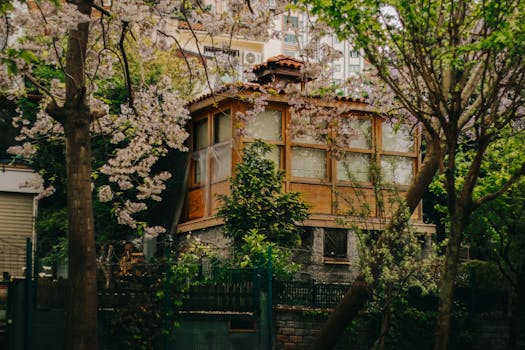
Urban Green Spaces: The Future of Outdoor Living in European Cities by 2025
Urban Green Spaces are becoming increasingly important in European cities as they provide numerous benefits for residents, including improved air quality, reduced noise pollution, and enhanced mental health. As we approach 2025, it’s essential to explore the future of outdoor living in these cities and how urban green spaces will play a vital role in shaping it.
Introduction to Urban Green Spaces
Urban green spaces refer to any area in a city that is covered with vegetation, such as parks, gardens, green roofs, and green walls. These spaces can be public or private and are designed to provide a range of benefits for residents, including recreational areas, wildlife habitats, and climate regulation.
Benefits of Urban Green Spaces
The benefits of urban green spaces are numerous and well-documented. Some of the most significant advantages include:
- Improved air quality: Urban green spaces can help reduce air pollution by absorbing pollutants and producing oxygen.
- Reduced noise pollution: Green spaces can act as a buffer against noise pollution, creating a more peaceful environment for residents.
- Enhanced mental health: Spending time in nature has been shown to have a positive impact on mental health, reducing stress and anxiety.
- Climate regulation: Urban green spaces can help regulate the urban climate, reducing the urban heat island effect and mitigating the impacts of extreme weather events.
Future of Outdoor Living in European Cities
As we approach 2025, it’s clear that urban green spaces will play a vital role in shaping the future of outdoor living in European cities. With the increasing urbanization of populations, cities are facing numerous challenges, including climate change, air pollution, and social inequality.
Urban green spaces can help address these challenges by providing a range of benefits, including:
- Sustainable urban planning: Urban green spaces can be integrated into urban planning, creating sustainable and resilient cities.
- Climate change mitigation: Green spaces can help mitigate the impacts of climate change, such as extreme weather events and heatwaves.
- Social cohesion: Urban green spaces can provide a shared space for residents, fostering social cohesion and community engagement.
Case Studies: Successful Urban Green Space Initiatives
There are numerous examples of successful urban green space initiatives across European cities. Some notable examples include:
- Barcelona’s Superblock program: This initiative has transformed the city’s streets into green spaces, reducing traffic and improving air quality.
- Copenhagen’s green roof initiative: The city has implemented a policy requiring all new buildings to have green roofs, reducing stormwater runoff and improving biodiversity.
- London’s Urban Forest: The city has launched an initiative to plant 2 million new trees, creating a urban forest that will help mitigate the impacts of climate change.
Conclusion
In conclusion, urban green spaces are essential for the future of outdoor living in European cities. As we approach 2025, it’s clear that these spaces will play a vital role in shaping the future of our cities, providing numerous benefits for residents and helping to address the challenges facing urban populations.





